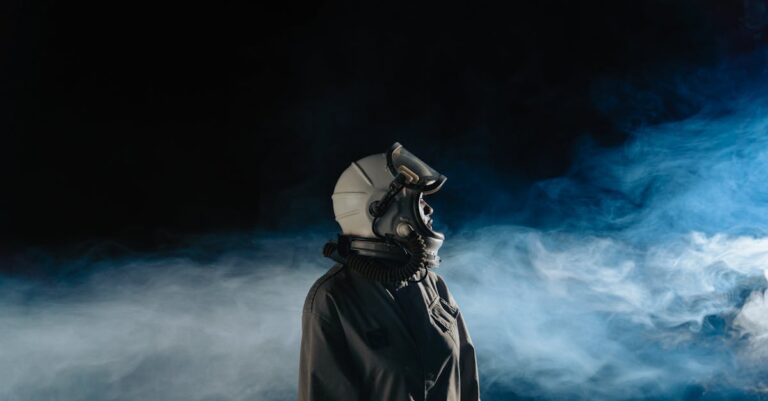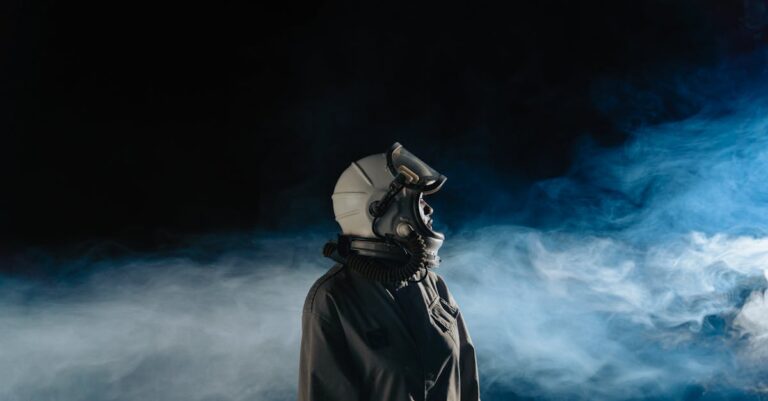
## The Resonance Archive
The beetle’s carapace shimmered under the lab light, a dull emerald flecked with sapphire dust. Dr. Aris Thorne traced a gloved finger along the ridged surface, ignoring the prickle on his neck. It wasn’s about sentimentality; it was about data. He tapped a command into his tablet, initiating the latest scan. The piezoelectric sensors hummed, relaying information to the acoustic analysis software.
A low thrum resonated from the speaker, rising in pitch and complexity. Not a chirp or buzz—something else entirely. Something…structured.
“Anything?” Lena Ramirez asked, her voice tight with exhaustion. Years of this, chasing echoes in dead things.
Aris didn’t look up. “The harmonics are…unusual. Layered. Almost like a language.” He gestured to the waveform dancing on the screen, a chaotic yet ordered cascade of peaks and valleys. “I’m running it through the spectral analyzer.”
Lena rubbed her eyes, a dark smudge beneath them. “You think it’s intentional?”
“I don’t know what it *is*,” Aris retorted, his focus absolute. “But it’s not random.”
The initial discovery had been accidental—a routine preservation of a *Chrysina resplendens*, found deep in the Amazon basin. The team hadn’t expected anything beyond standard metabolic analysis. Then, during a routine acoustic scan to check for insect-borne pathogens, they found it: the resonance. Deep and intricate, defying any known biological explanation.
That was two years ago. Two years of relentless investigation, funding battles with the university board, and increasingly strained team dynamics.
“The decay rate on specimen 47 is accelerating,” Maya Singh announced, her voice devoid of inflection. She monitored the environmental controls with a hawk-like intensity. “Temperature fluctuation is within acceptable parameters, humidity remains stable.”
Aris frowned. Specimen 47 was the original *Chrysina*. The one that started it all. Its decay rate had always been slightly faster than the others—a quirk they initially dismissed. Now, it was a critical marker.
“Run diagnostics on the containment field,” Aris ordered. “Double check for electromagnetic interference.”
The lab was a sterilized bubble, a testament to their dedication and desperation. White walls lined with sensors, holographic displays showcasing spectral analyses, and rows of preservation units humming with a low, constant throb. It felt less like a research facility and more like a high-tech mausoleum.
“The anomaly is expanding,” Lena reported, her fingers flying across the keyboard. “It’s not just within the specimen now. It’s… radiating.”
Aris felt a familiar knot tighten in his stomach. This wasn’t supposed to happen. The containment protocols were airtight.
“Show me the readings from your workstation,” Aris demanded, turning to face her. He leaned closer, scrutinizing the data streaming across her screen.
“It’s subtle,” Lena explained, pointing to a faint flicker in the acoustic baseline. “A harmonic shift. Almost imperceptible.”
But Aris saw it. A ripple in the fabric of their carefully controlled reality. He felt a strange vibration through the soles of his boots, a subtle thrumming that resonated deep within him.
He shook his head, trying to dispel the sensation. “Could be equipment malfunction.”
“I checked everything twice,” Lena insisted, her voice rising slightly. “The system is operating within nominal parameters.”
Aris turned to Maya, who continued her silent vigil over the environmental controls. “What about you?”
She didn’t meet his gaze, her face a mask of meticulous neutrality. “All systems green.”
The team’s initial excitement had gradually eroded, replaced by a weary resignation and an undercurrent of unease. The relentless pursuit of the resonance had taken its toll, fracturing their camaraderie and blurring the line between scientific inquiry and obsession.
Aris felt a sudden wave of dizziness wash over him, the lab spinning around him like a vortex. He steadied himself against a nearby console, his knuckles white with effort.
“Everything alright, Aris?” Lena asked, her voice laced with concern.
“Fine,” he mumbled, forcing a smile. “Just need some air.”
He stumbled toward the exit, gasping for breath. Outside, the sterile hum of the lab was replaced by the muted sounds of campus life—the distant chatter of students, the rustling of leaves in the wind. It felt alien, a forgotten memory.
He leaned against the wall, trying to clear his head. He felt… different. The world seemed sharper, more vibrant, as if a veil had been lifted from his eyes. He heard sounds he’d never noticed before—the subtle creak of the building, the rhythmic pulse of distant traffic.
Then he heard it—a faint, melodic hum emanating from within the lab. A resonance unlike anything he’s heard before. It wasn’t just acoustic; it felt… emotional. A wave of profound sadness washed over him, followed by a surge of something akin to joy.
He felt an overwhelming compulsion to return to the lab, to immerse himself in the resonance once more.
“Aris!” Lena’s voice snapped him back to reality. She stood in the doorway, her face pale with alarm.
“What?” he asked, struggling to focus.
“You need to see this,” she said urgently, gesturing him back inside.
Inside the lab, Maya stood transfixed before a holographic display, her eyes wide with disbelief. The screen displayed a complex network of interconnected nodes, each representing a different lifeform—the *Chrysina*, various species of fungi discovered in the Amazon, deep-sea invertebrates collected from hydrothermal vents.
“It’s… replicating,” Maya whispered, her voice trembling with awe. “The resonance pattern is appearing in these other organisms.”
Aris approached the display, his mind struggling to comprehend the implications. The resonance wasn’t confined to a single insect; it was propagating, infecting other forms of life.
“How is that possible?” Lena asked, her voice barely a breath.
Aris shook his head, feeling lost in a sea of unanswered questions. The resonance was defying all known scientific principles, rewriting the rules of biology and communication.
“It’s not random,” Aris murmured, staring at the holographic display. “There’s a logic to it. A pattern.”
He started noticing the connections—the subtle similarities in their biological structures, the shared environmental conditions they inhabited. It was as if these organisms were part of a larger network, interconnected by the resonance.
“We’ve been trying to translate it linguistically,” Lena said, frustration evident in her voice. “But it’s not language as we understand it.”
“It’s something else,” Aris countered. “A… a shared experience. A collective consciousness.”
He envisioned the *Chrysina* in the Amazon rainforest, communicating with other insects, fungi, and plants through the resonance. A silent symphony of life, a hidden world beyond human comprehension.
Then he remembered a lecture from his early days in grad school—a forgotten paper on bioanalogous devices, instruments designed to mimic biological processes. The researcher had claimed that certain frequencies could be used to create a “reading system,” capable of interpreting nonverbal communication.
“Bioanalogous devices,” Aris said, the words echoing in his mind. “What if we could build a device to interpret the resonance?”
Lena and Maya exchanged glances, their eyes filled with a mixture of hope and skepticism. It was a long shot—a desperate gamble. But it was the only path forward they could see.
“We need to start with the *Chrysina*,” Aris continued, his voice filled with renewed determination. “Analyze its resonance in detail. Identify the key frequencies and harmonics.”
They spent weeks dissecting the beetle’s resonance, painstakingly documenting every nuance of its acoustic signature. They built prototypes of bioanalogous devices, tweaking their designs based on observation and intuition.
The work was grueling, pushing them to the brink of exhaustion. The decay rate on specimen 47 accelerated relentlessly, a constant reminder of their dwindling time.
The team started exhibiting strange behaviours. Sleep became less necessary, hunger faded into oblivion; focus intensified to feverish levels. They started dreaming in vibrant colors and resonating frequencies, their minds merging with the essence of unknown languages. A sense of collective dread built up in the lab, a silent acknowledgement of something profoundly wrong with their unraveling reality.
Then came the breakthrough—a small, unassuming device that could translate a fragment of the resonance into visual patterns. It was crude but functional—a first step toward understanding the language of life beyond human comprehension.
Aris stared at the display, mesmerized by the flickering images. They were abstract, non-representational—but they carried a distinct emotional quality. He felt a wave of profound sadness wash over him, followed by a surge of something akin to joy.
“It’s communicating,” Aris whispered, his voice filled with awe. “It’s telling us something.”
He focused on the display, straining to decipher the message. The images shifted and morphed, conveying a sense of urgency, a feeling of impending doom.
Then he understood—a warning. The resonance wasn’t just a means of communication; it was a defense mechanism. A way to ward off an unknown threat.
“Something is coming,” Aris said, his voice trembling with fear. “Something that can disrupt the resonance.”
He turned to Lena and Maya, his eyes filled with a desperate plea. “We need to find out what it is.”
They spent the next few days frantically searching for clues, pouring over data, analyzing environmental readings. They discovered a strange anomaly detected by the deep-sea probes—a massive energy signature emanating from an unexplored region of the Pacific Ocean.
The signature was unlike anything they’s ever seen—a chaotic, dissonant frequency that seemed to actively negate the harmonious resonance.
“It’s eating the resonance,” Lena said, her voice filled with horror. “It’s destroying it.”
Aris felt a cold dread grip his heart. The unknown threat was real—and it posed an existential danger to all life on Earth.
“We need to warn someone,” Aris said, his voice trembling with urgency. “Tell the world about the resonance. Tell them what’s coming.”
But as he reached for the phone, a wave of dizziness washed over him. He stumbled and fell to the floor, his vision blurring.
He looked up to see Lena and Maya standing over him, their eyes vacant and devoid of emotion. Their faces were pale, as if drained of all life.
“It’s too late,” Lena said, her voice monotone and devoid of inflection. “The resonance is fading.”
Aris tried to speak, but no sound came out. He felt a strange sensation creeping through his body—a sense of disconnection, as if he were losing touch with reality.
He looked down at his hands and saw them shimmering, becoming translucent. He felt himself dissolving, merging with the fabric of existence.
As he faded away, he heard a faint whisper—a resonance from beyond the veil of reality. It was a message of peace, a farewell to a world he would never see again.
The lab fell silent, the hum of machinery fading into oblivion. The preservation units went dark, their contents returning to dust.
The resonance archive was gone, its secrets buried beneath the weight of time and silence. But somewhere, deep within the heart of existence, a faint echo remained—a testament to the interconnectedness of all life and the enduring power of unseen worlds.


